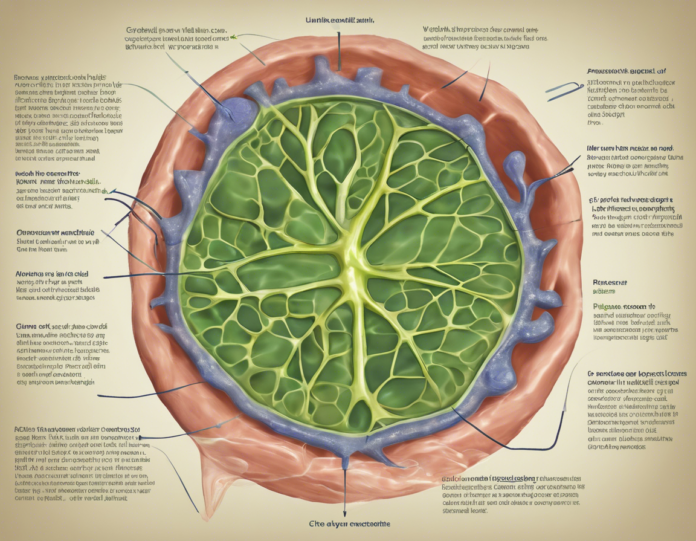Plasmolysis is a vital concept in the realm of plant biology, playing a fundamental role in understanding how plant cells function and respond to their environment. In this article, we will delve into the intricacies of plasmolysis, exploring what it is, how it occurs, its significance, and the factors influencing this phenomenon in plant cells.
What is Plasmolysis?
Plasmolysis is the process by which a cell loses water in a hypertonic solution, causing the plasma membrane to separate from the cell wall due to the plasmolytic shrinkage. This phenomenon occurs when a plant cell is placed in a solution with a higher solute concentration than the cell’s cytoplasm, creating a hypertonic environment.
How Does Plasmolysis Occur?
When a plant cell is exposed to a hypertonic solution, water inside the cell moves outwards towards the higher concentration of solutes in the surrounding solution through the process of osmosis. As water exits the cell, the vacuole loses water, leading to a decrease in turgor pressure. Consequently, the plasma membrane detaches from the cell wall, causing the cytoplasm to shrink and move away from the cell wall.
Significance of Plasmolysis
Plasmolysis serves as a crucial process in understanding various aspects of plant biology. It helps in studying the permeability of the plasma membrane, osmotic regulation in plant cells, and the adaptation of plants to different environmental conditions. Additionally, plasmolysis is essential in agricultural research, as it aids in understanding how plants respond to drought stress and other adverse conditions.
Factors Influencing Plasmolysis
Several factors influence the occurrence of plasmolysis in plant cells, including the tonicity of the external solution, the integrity of the cell wall, the osmotic pressure within the cell, and the type of plant cell. Moreover, environmental factors such as temperature and humidity can also impact the plasmolysis process in plants.
Mechanism of Plasmolysis
The mechanism of plasmolysis involves a series of steps starting with the placement of a plant cell in a hypertonic solution. As water exits the cell through osmosis, the vacuole shrinks, leading to the detachment of the plasma membrane from the cell wall. This results in the formation of a gap between the plasma membrane and the cell wall, causing the cytoplasm to contract.
Effects of Plasmolysis on Plant Cells
Plasmolysis can have various effects on plant cells, including the loss of turgidity, reduction in cell volume, detachment of the plasma membrane, and disruption of metabolic processes. While reversible plasmolysis allows cells to regain their original form upon exposure to a hypotonic solution, irreversible plasmolysis can lead to cell death in severe cases.
Importance of Studying Plasmolysis
Studying plasmolysis is essential for understanding how plant cells maintain osmotic balance, regulate water uptake and loss, and respond to changing environmental conditions. It provides valuable insights into the physiology of plant cells and their ability to adapt to osmotic stress. Additionally, research on plasmolysis is crucial for improving crop yield, developing drought-resistant plants, and enhancing agricultural practices.
Frequently Asked Questions (FAQs) About Plasmolysis:
- What is the difference between plasmolysis and deplasmolysis?
-
Plasmolysis is the process of cell shrinkage due to water loss in a hypertonic solution, while deplasmolysis is the reversal of this process when the cell is placed in a hypotonic solution.
-
Can plasmolysis occur in animal cells?
-
Plasmolysis is specific to plant cells with cell walls. Animal cells lack cell walls, so they do not undergo plasmolysis.
-
How is plasmolysis different from cytorrhysis?
-
Plasmolysis refers to the shrinkage of the cell contents, while cytorrhysis is the rupture of the plasma membrane due to extreme turgor pressure.
-
What are the practical applications of studying plasmolysis?
-
Understanding plasmolysis is crucial for developing strategies to improve plant resistance to drought, salinity, and other environmental stresses, thereby enhancing crop productivity.
-
Can plasmolysis be reversed once it occurs?
- Reversible plasmolysis can be reversed by placing the plant cell in a hypotonic solution, allowing the cell to regain its turgidity and original shape.
In conclusion, plasmolysis is a fundamental process in plant biology that plays a pivotal role in cell physiology, osmotic regulation, and adaptation to environmental conditions. By unraveling the mechanisms and significance of plasmolysis, researchers and scientists can gain valuable insights into the intricate workings of plant cells and pave the way for advancements in agriculture, biotechnology, and environmental conservation.









